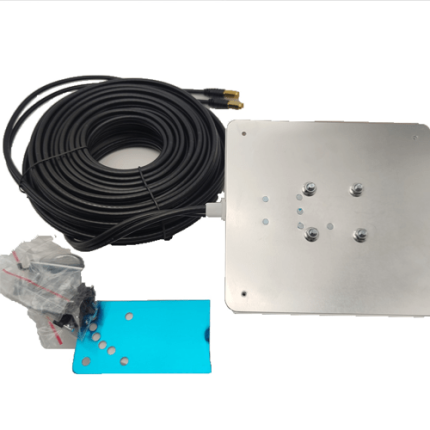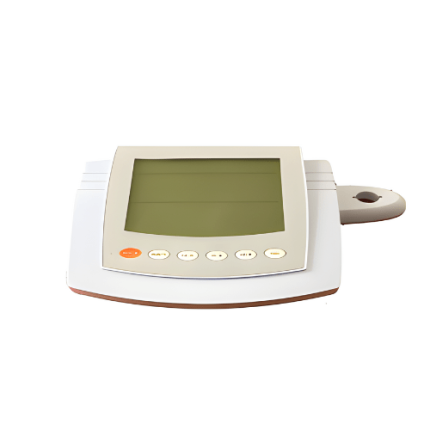Description
Overview of Underfill Detection Using BLE or RFID
Underfill detection using Bluetooth Low Energy (BLE) is a highly efficient approach for maintaining product quality in manufacturing and logistics. BLE sensors can be strategically placed on or inside containers to continuously monitor fill levels. These sensors are designed to operate on low power, making them suitable for extended use without frequent battery replacements.
The real-time data collected by BLE sensors is transmitted wirelessly to a central monitoring system, allowing for immediate detection of underfill conditions. When an underfill is detected, alerts can be sent to operators or automated systems to take corrective actions, thereby reducing production errors and minimizing waste.
BLE technology is not only cost-effective but also easy to deploy, making it ideal for large-scale applications. Its ability to form a mesh network ensures reliable data transmission across a wide area, enhancing the overall efficiency of the monitoring system. By integrating BLE sensors into their quality control processes, companies can ensure that their products consistently meet specified standards, thus improving customer satisfaction and reducing the risk of recalls.
Applications in Underfill Detection Using BLE or RFID
- Beverage bottling lines
- Pharmaceutical vial filling
- Chemical container monitoring
- Food packaging lines
- Cosmetic product filling
- Paint and coating manufacturing
- Agricultural chemical dispensing
- Dairy product filling
- Liquid soap and detergent production
- Ink and dye manufacturing
- Oil and lubricant packaging
- Perfume and fragrance bottling
- Aerosol can filling
- Water bottle production
- Juice and soft drink packaging
- Wine and spirits bottling
- Medical device manufacturing
- Nutraceutical product filling
- E-liquid (vape juice) production
- Industrial adhesive dispensing
- Cleaning product manufacturing
- Sauce and condiment bottling
- Syrup and honey filling
- Shampoo and conditioner packaging
- Battery electrolyte filling
- Ink cartridge production
- Liquid fertilizer packaging
- Automotive fluid filling
- Pesticide and herbicide dispensing
- Chemical reagent packaging
- Ready-to-eat meal packaging
- Liquid dietary supplement filling
- Biotech reagent manufacturing
- Blood and plasma bag filling
- Liquid soap dispenser refills
- Laboratory chemical filling
- Water treatment chemical packaging
- Construction material mixing (liquid components)
- Personal care product packaging
- Beverage dispensers in restaurants
Technical Specifications of Underfill Detection Using BLE or RFID
BLE Beacons or RFID tags in Underfill Detection Systems
BLE beacon devices are designed for low power consumption, allowing them to operate efficiently on small batteries for extended periods, often up to several years. BLE beacons typically provide a communication range between 10 to 100 meters, depending on environmental conditions and beacon configuration. They support data rates of up to 1 Mbps, sufficient for real-time data transfer. Operating in the 2.4 GHz ISM band, BLE beacons transmit data wirelessly to central monitoring systems or mobile devices, ensuring immediate detection and response to underfill conditions. Their compact and lightweight design makes them adaptable for integration into various packaging types without altering overall dimensions. Additionally, BLE beacons employ AES-128 encryption for secure data transmission and use frequency hopping to minimize interference from other wireless devices.
RFID Tags include passive and active tags, with passive tags drawing power from the reader’s electromagnetic field and active tags containing batteries with operational lifespans of several years. Passive RFID tags offer a communication range of up to 10 meters, while active tags can reach up to 100 meters. RFID tags operate across multiple frequency bands—125-134 kHz (LF), 13.56 MHz (HF), 860-960 MHz (UHF), and 2.45 GHz (Microwave)—supporting data rates from 25 kbps to 640 kbps. RFID tags can store from a few bytes to several kilobytes of data and use advanced anti-collision protocols to manage multiple readings without interference. They are durable, designed to withstand harsh conditions such as exposure to chemicals and extreme temperatures, and come in various forms, including labels, cards, and embedded tags. RFID systems also incorporate robust security features, including encryption and secure authentication, ensuring data integrity and protection.
BLE Gateways or RFID Readers in Underfill Detection Systems
In underfill detection systems, BLE gateways and RFID readers play crucial roles in managing and interpreting data from BLE beacons and RFID tags, respectively.
BLE gateways are essential for collecting and forwarding data from BLE beacons. They are designed to handle low power consumption, enabling them to operate efficiently for extended periods. These gateways typically offer a communication range of 10 to 100 meters, depending on the beacon’s configuration and environmental factors. They support high data rates, up to 1 Mbps, for real-time data transmission. Operating within the 2.4 GHz ISM band, BLE gateways facilitate the collection of data from multiple beacons simultaneously. They often come equipped with advanced features such as real-time data processing, local storage, and integration capabilities with cloud-based systems or IoT platforms. BLE gateways also include security features like AES-128 encryption to ensure data protection and often support firmware updates and network management functions to optimize performance and reliability.
RFID readers are designed to interface with RFID tags to capture and process data. The power consumption of RFID readers varies depending on their type—handheld, fixed, or integrated—and their operational mode. Fixed and integrated readers generally have lower power consumption compared to handheld models, which are battery-operated. RFID readers operate over different frequency bands, including Low Frequency (LF) at 125-134 kHz, High Frequency (HF) at 13.56 MHz, Ultra High Frequency (UHF) at 860-960 MHz, and Microwave at 2.45 GHz. They are capable of reading data at rates ranging from 25 kbps to 640 kbps. RFID readers provide varying communication ranges: passive readers generally work up to 10 meters, while active readers can reach up to 100 meters. These readers are equipped with anti-collision technology to handle multiple tag readings simultaneously and incorporate advanced security features, including encryption and secure authentication protocols. RFID readers also offer various integration options with existing enterprise systems, enabling seamless data flow and management.
Cloud Systems
GAO Cloud BLE or RFID Systems consists of the following parts:
GAO BLE Gateways and Beacons and RFID Readers and Tags:
BLE or RFID Cloud, Server, PC & Mobile
GAO Cloud Services Engine for BLE or RFID
Data Collection and Integration, Data Storage, Real-Time Analytics, Dashboard and Reporting, Alerts and Notifications, Security and Compliance, Scalability and Flexibility, User Interface and Accessibility.
Integration APIs
APIs enable seamless integration between the BLE or RFID solution and existing underfill detection systems such as data collection API, real-time data streaming API, analytics API, alert API, cloud storage API, security API and device management API.
Server, PC & Mobile Systems
GAO Server, PC & Mobile BLE or RFID Systems are composed of
BLE Gateways and Beacons, RFID Tags and Readers
GAO Server, PC and Mobile Software Engine for BLE & RFID
Server, PC and Mobile Servers and Infrastructure, Middleware Software, and Database Management System.
Integration with Underfill Detection Systems
The Server, PC, and Mobile solution integrates with existing underfill detection systems such as optical inspection systems, X-ray inspection systems, acoustic or ultrasonic inspection systems, and automated optical inspection (AOI) systems. integration is achieved through APIs, database connections, or middleware adapters, enabling seamless data exchange and synchronization.
All GAO’s RFID products are jointly offered by GAO Tek Inc. and its sister company GAO RFID Inc., ranked as a top 10 global RFID and IoT supplier. For RFID products on https://gaotek.com/, please visit RFID-BLE category, and its sub-categories: BLE Gateways, Beacons & Accs, UHF Readers, Tags & Accs, NFC & HF Readers, Tags & Accs, LF Readers, Tags & Accs, and BLE or RFID Cloud, Server, PC & Mobile.
You also are encouraged to visit gaorfid.com that offers a more comprehensive, more complete and different set of RFID products: BLE, RFID Readers, RFID Tags, Antennas & Accessories, RFID Systems, System By Feature.



